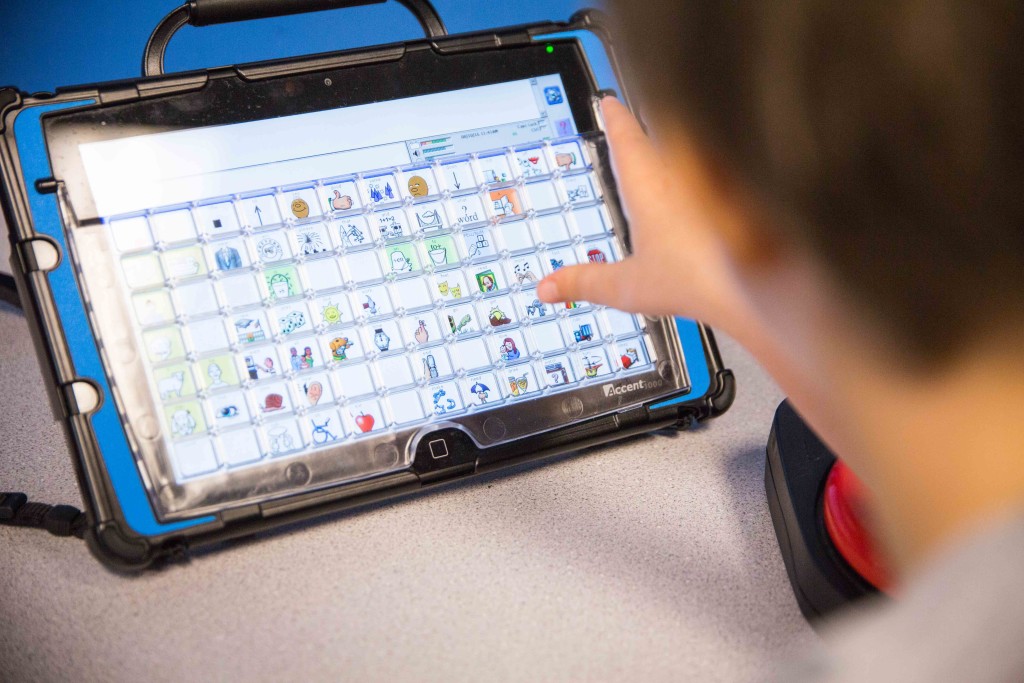TEAM Resource Library Topic: Augmentative and Alternative Communication (AAC)
Q: What is AAC?
A: Augmentative and Alternative  Communication (AAC) is a term that is used to describe various methods of communication that can help people who are unable to reliably use verbal speech to communicate. AAC can benefit a wide range of individuals, from a beginning communicator to a more sophisticated communicator.
Communication (AAC) is a term that is used to describe various methods of communication that can help people who are unable to reliably use verbal speech to communicate. AAC can benefit a wide range of individuals, from a beginning communicator to a more sophisticated communicator.
AAC includes both unaided and aided systems. Unaided systems, like signing and gestures, do not require special materials or equipment. Aided systems use picture charts, books, iPads, or special communication devices. Most individuals who use AAC have a combination of no-tech, low-tech, and high-tech systems and strategies that are used at different times during the day. AAC methods vary and may be personalized to meet an individual’s needs.
Q: Who is appropriate for AAC?
A: Any person who is unable to reliably use verbal speech to communicate is appropriate for AAC. This includes patients that are nonverbal, unintelligible, aphasic, or echolalic.
Q: How do I refer my child for an AAC evaluation?
A: Email AACreferral@childrenstherapyteam.com
Q: What if I’m not sure my patient is appropriate for AAC?
A: Email AACreferral@childrenstherapyteam.com anyway! A consultant will meet with you and your patient to help you and the parents decide what is best for the child.
Common Myths about AAC:
Myth: AAC is a “last resort” in speech-language intervention.
Fact: The use of AAC interventions should not be contingent on failure to develop speech skills or considered a last resort because AAC can play many roles in early communication development. (Cress & Marvin, 2003; Reichle, Buekelman & Light, 2002)
Myth: AAC hinders or stops further speech development.
Fact: For very young children, the use of AAC does not appear to hinder speech development (Cress, 2003). In fact, it may enhance the development of spoken communication, which should be a simultaneous goal for intervention. (Romski, 2005)
Myth: Speech-generating AAC devices are only for children with intact cognition.
Fact: The technological developments in AAC devices have made a broad range of options available to young children. There are now many choices of AAC devices that speak, from simple technology (like single switches) to complex systems, that permit access to a variety of language and literacy skills. (Romski, 2005)
Myth: AAC is only for children who are nonverbal.
Fact: AAC is for any patient who does not have reliable verbal speech. If your patient does not have effective expressive communication, consider AAC.
